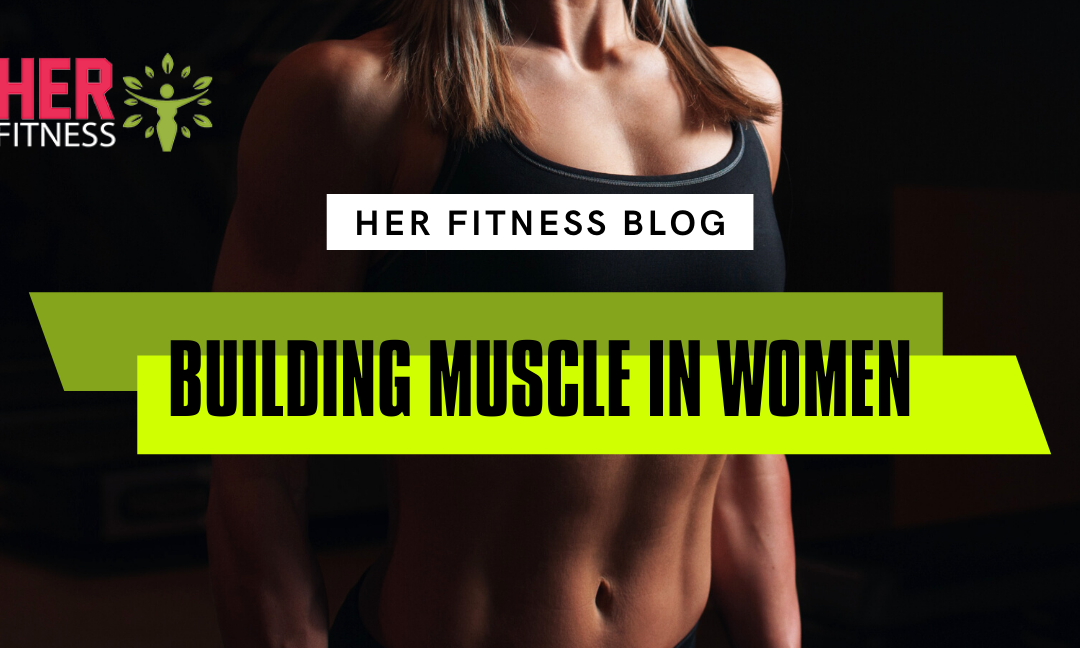Strength training with the goal of building muscle is now very popular with women too. With good reason: It not only improves fitness and health, it also makes you more attractive and improves your body feeling! Find out the most important facts about “building muscle in women”.
That brings you a muscle building workout
For a long time women and muscles weren’t really connected – apart from top athletes. But that has changed radically: Many women now know that strength training does not turn them into “mountains of muscles” without feminine curves , because women simply lack the genetic predisposition for this. If you don’t believe it, just look at stars like Beyoncé, Scarlett Johansson or Jessica Biel: They all do intensive strength training and thus look feminine, fit, and sexy.
Better health
Because we sit a lot in everyday life, we stress our bodies very unevenly. Especially the back (the calves, the muscles on the back of the thighs, the buttocks and the back) are not challenged enough by the modern lifestyle. The consequences of this one-sided weakening are, for example, muscular imbalances, which in turn lead to symptoms such as tension, back pain, or headaches. So certain parts of the body are too weak and need more strength to restore balance.
But overall, our strength is generally no longer in very good shape, after all, most of us do not work physically – and certainly not hard. We should compensate for that, because we can use more muscles . Just think about everyday life: dragging the water tank into the apartment, helping with the move, carrying the bike up to the platform – you don’t have to work as a movers to benefit from more strength.
If you think now: “Pah, I will carry the water tank up every staircase without training!” Why is that desirable? Because sooner or later the age will become noticeable and then your strength will inevitably go downhill. The higher your starting level, the better it is for you. In addition, strong muscles generally ensure that your ligaments, cartilage and joints are much less stressed.
More performance in sport
Today it is widely recognized that an increase in strength or the development of muscles has a positive effect on performance in any sport , be it running, golf, swimming, handball, sailing or riding. So if you are ambitious and passionate about sport, you should definitely do accompanying strength training.
Incidentally, more muscles not only increase your level of performance because they make you stronger, faster and more enduring, they also protect you from injuries because your joints are better stabilized and your bones are strengthened. By the way, when doing strength training itself, the risk of injury is very low.
A better body feeling
Weight training makes you sexy because it improves your posture and gives you a well-defined body. The additional muscles can also tighten your skin in some places, because the muscles press against the skin from the inside so that their tension increases.
Muscles of women: differences from men
There are some anatomical differences between men and women that affect strength and muscle-building potential. Although both sexes have the same muscle fiber type distribution (ratio of type I, the slow fibers, and type II, the fast fibers), women have fewer muscle fibers overall, which are also smaller than those of men. [1] For example, a Caucasian woman between the ages of 31 and 35 has an average muscle mass of 34 kg, while a Caucasian man from the same age group weighs 41 kg. [2]
In three out of four untrained women, the slow type I fibers are also larger in cross-section than the fast type II fibers, although the latter has the greater potential for growth. Since type II fibers are trained through strength and speed-strength performance, it could be that this phenomenon can be attributed to the fact that women use less strength and speed-strength than men in sports and everyday life.
The weakness of women: the upper body
What is certain is that a strength training program for women should aim to stimulate precisely the type II fibers. This means that the result of strength and muscle building in women depends even more than in men on whether they are training with (very) heavyweights. Because in order to stimulate type II fibers to grow, you have to train at least in the so-called “hypertrophy area” with eight to twelve maximum possible repetitions.
Advanced athletes should even repeatedly go up to the maximum strength range, where only one to five (explosive) repetitions can be performed with one weight. In addition, maximum explosive movements with little or no additional weight should be integrated into the plan in order to additionally train speed-strength. Here, for example, squat-stretch jumps or push-ups with push-offs are ideal.
The lower number of muscle fibers compared to men and their lower average are reflected in a 40% lower overall body strength, with women mainly lacking upper body strength: while the lower body of women (legs and buttocks) 70 to 75% of the Can generate strength from male lower bodies, the trunk and arms only bring it to 25-55% It is therefore immensely important for athletic performance and everyday resilience that women do not only concentrate on their natural strengths in strength training. Instead, the training should also, and above all strengthen the upper body.
Different hormonal environments
Even women with comparatively high concentrations of androgens, the “male” sex hormones, which also include testosterone, only make up 1/10 to 1/20 of the amount in the male body. The larger amount of androgens ensures, among other things, that men can build more muscles in absolute terms and form less body fat. Men have around 8 to 15 kg of body fat and women 10 to 20 kg. [3] Probably the so-called “Human Growth Hormone” (HGH), which is present in higher concentrations in the female body than in the male and which also builds up tissue, compensates for the lower testosterone level.
Muscle Building Training Tips for Women
For your muscle building as fast as possible, here are the most important information about your training plan . Stick to the values as closely as possible, because they are the standard parameters for an effective muscle-building training plan .
Training frequency
First of all, the question of how often you should train as a woman: every muscle should be challenged two to three times a week. There should be a break of at least 48 hours between two workouts for a muscle. For example, it makes sense to train on Mondays, Wednesdays and Fridays. If you don’t want to train at least four times a week, you should choose a full-body workout, as a split workout in this case does not provide enough stimuli for optimal muscle growth. With four workouts, on the other hand, you could, for example, train your upper body twice a week and your lower body twice, so that all major muscle groups in your body are intensively stimulated twice a week.
Training duration
Strength training itself should take no more than 45 to 60 minutes. There is also a five to ten-minute warm-up program. This should consist of a short round of cardio exercise to get your heart rate up a bit. Then you should warm up yourself with the exercises by first doing a few sets with significantly less weight than the so-called “working weight”.
Stretching, i.e. static stretching, on the other hand, does not belong in either the warm-up or cool-down program of strength training: if done before training, it steals strength, after training it damages the muscle tissue in which small cracks have already formed. even further, which can lengthen the regeneration process and increase muscle soreness. [4]
If possible, you should not do cardio training on the same day as your strength training, because if you do it before strength training, you may be wasting valuable energy without which you cannot achieve your full performance on the dumbbells. If your primary goal is to train your endurance, this will be okay. If, on the other hand, you want to build muscle above all, you should make the appropriate training a priority and always go to work with all your strength.
A cardio workout for strength training is therefore in doubt the better choice, but it has one drawback: Your muscles are exhausted from training and should now quickly the substances get fed, they need to regenerate and grow (especially water, carbohydrates and egg white). If you instead climb the ergometer or the cross trainer, you are doing the opposite by reducing your body’s further energy reserves. If you do this, you need to take this into account in the first meal after your workout by making it very generous.
Design of the training
The following parameters are traditionally chosen to build muscle:
Sets per exercise: 3
Repetitions per set: 8-12
Break between sets: 1.5-3 minutes
Execution speed : continuous-brisk (4 – 5 seconds for a complete repetition)
Breathing: inhale in the eccentric (yielding) phase, exhale in the concentric (overcoming) phase. For basic exercises, however, in most cases what is known as ” press breathing ” is used, which has to be learned.
Exercise selection
For a full-body workout, choose the exercises so that all major muscle groups are trained. If you are unsure which exercise trains what, seek advice from a trainer. Try to include as many “basic exercises” as possible, such as squats, deadlifts, bench presses, pull-ups, or shoulder presses, in your plan, because these train many muscles at once and are most functional. However, they are very demanding.
If you do not have the opportunity to have a professional teach you these exercises, the second-best choice is to use training equipment that more or less accurately reproduces the basic exercises (leg press, chest press, shoulder press, lat pull). If, like the deadlift, there isn’t a single machine, you need to put together appropriate “isolation exercises,” that is, exercises that only work one or two muscles.
You should not only hold back on the number of exercises because of the limited training time, but also because you already have the best variants on board with the basic exercises (on machines). They also allow you to forego separate arm training because the arms are already intensively involved. If you do the basic exercises freely, you can also save yourself the abdominal training , as the torso always remains under tension and is already optimally strengthened.


Recent Comments